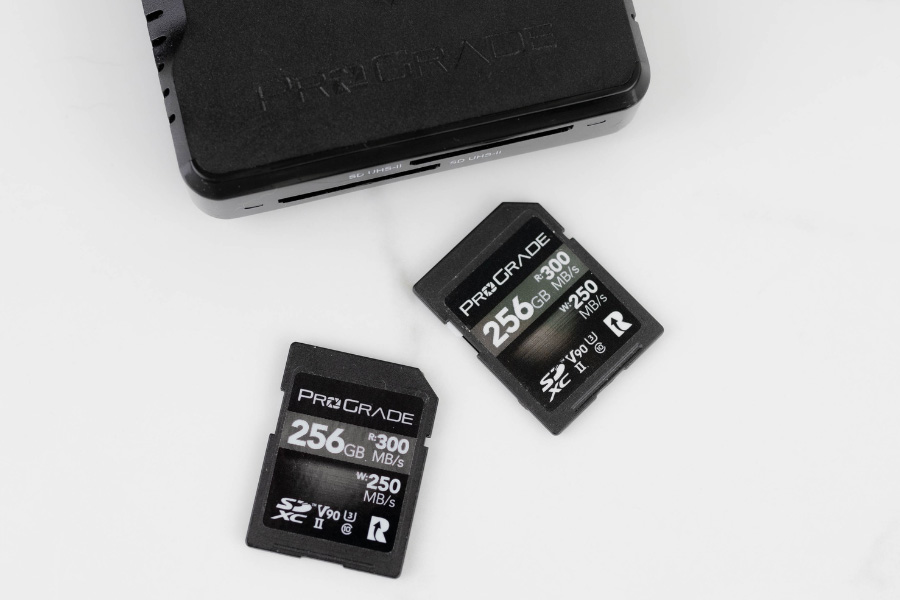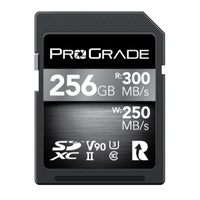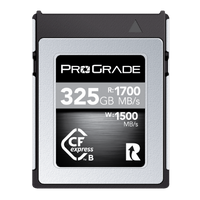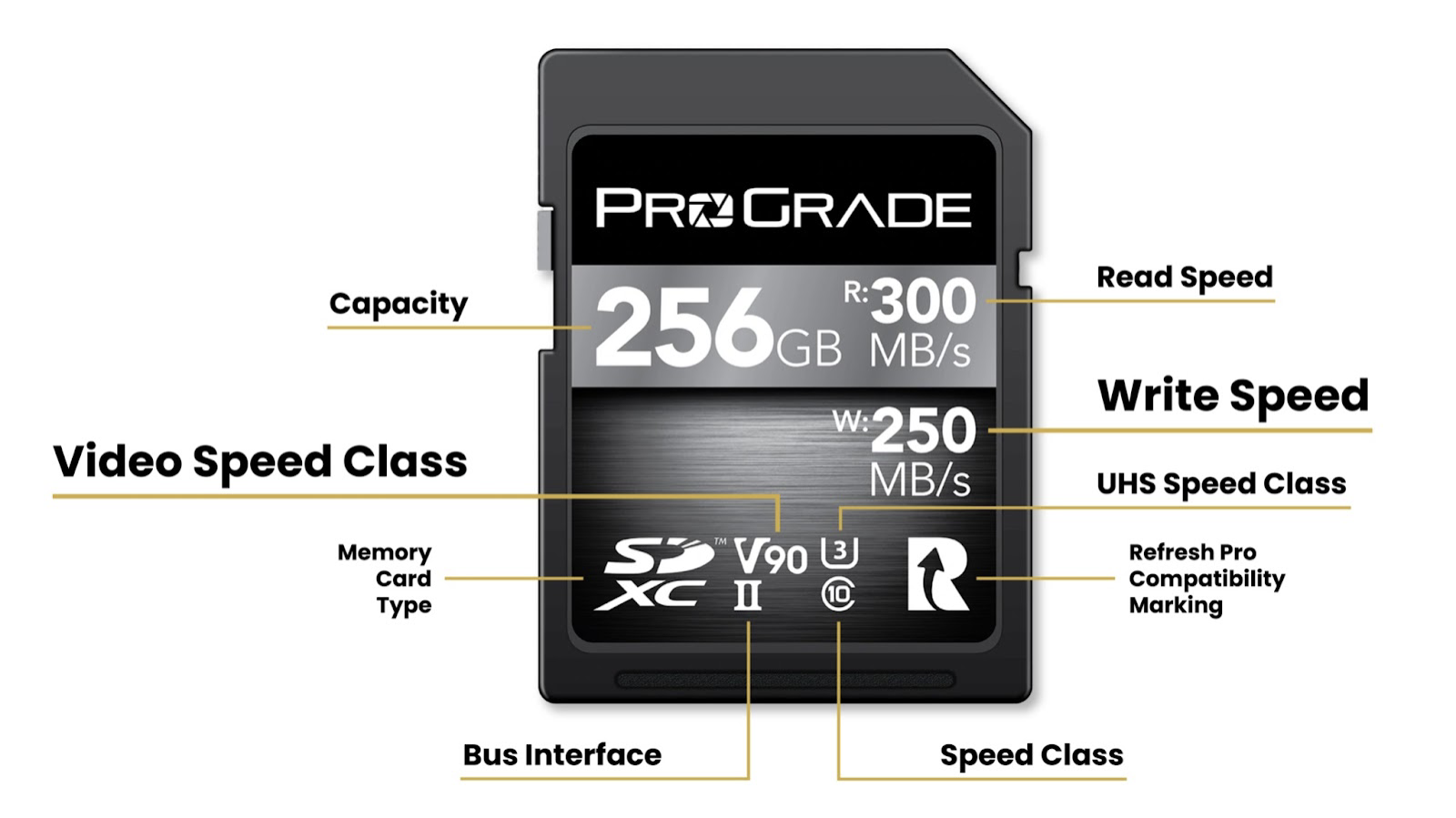
Symbols on SD Cards Explained
If you need to buy a new memory card for your digital camera but don’t know which one to get because all the symbols on the card confuse you, then this article is for you. After reading this, you’ll know exactly what those markings on SD cards mean and why they are there in the first place.
SD Card Type
The Secure Digital memory card family has three card types: SD, SDHC, and SDXC. The type marking is not a performance rating. Nor does it mean the cards have different form factors. It mainly indicates the range of capacity and file system memory card utilizes. As SD cards evolved, new types were created to allow more storage space.
- SD (Secure Digital) cards use the FAT12 or FAT16 file system and have a capacity between 64MB to 2GB.
- SDHC (Secure Digital High Capacity) cards use the FAT32 file system and have a capacity between 4GB to 32GB.
- SDXC (Secure Digital Extended Capacity) cards use the exFAT file system and have a capacity between 64GB to 2TB.
Capacity
This one is probably the most straightforward and easy-to-understand marking on the memory card. The card capacity is usually presented in Gigabytes (GB), and it tells you how much storage space a certain memory card has.
Read Speed
Usually given in Megabytes per second (MB/s), the read speed indicates how fast you can read data off the card. Faster read speed equals shorter data transfer times. In other words, when you import your photos and videos from the card to your computer, a card with a higher read speed will get the job done faster.
Write Speed
Write speed indicates how fast data can be written on the card. Like read speed, write speed also has significant implications for your project workflow.
Bus Interface
The bus interface determines the maximum bus speed at which a memory card can transfer data. Almost all SD cards manufactured today have either UHS-I or UHS-II bus interfaces. These are marked on the card with roman numerals I and II. UHS stands for Ultra High Speed.
UHS-I allows data transfer speeds up to 104MB/s and UHS-II up to 312MB/s. Since previous standards max out at 25MB/s, they have all become obsolete.
You can use UHS-II cards in UHS-I-compatible devices, but they won’t be as fast in them.
Speed Class Ratings
A speed class rating defines the minimum sequential write speed of the memory card. This is especially important for shooting videos. A memory card must maintain a certain continuous write speed to avoid frame drops and errors during recording.
The ever-increasing demand for advanced video quality recording drove the need for faster memory cards. To answer that demand, SD Card Association has constantly been updating its Speed Class standards: from Speed Class to UHS (Ultra High Speed) Class to Video Speed Class.
- Speed Class is marked on the card with a number inside the letter C. The number indicates a minimum sequential write speed. For example, an SD card with a C10 rating is guaranteed to sustain a write speed of 10MB/s. There are five ratings in this speed class: C2, C4, C6, C8, and C10.
- UHS Speed Class is marked on the card with a number inside the letter U. In this case, however, the number must be multiplied by 10 to get the minimum sequential write speed. So, a U3 card is guaranteed to sustain a write speed of 30MB/s. There are only two ratings in this class: UHS Speed Class 1 (U1) and UHS Speed Class 3 (U3).
- Video Speed Class is marked on the card with the letter V followed by a number. The number corresponds again to a minimum sequential write speed in MB/s. SD Card Association defines five speed ratings in this class: V6, V10, V30, V60, and V90.
Newer standards were initially meant to replace older ones, but since the camera manufacturers kept using older standards alongside the newer ones in their manuals and compatibility charts, card manufacturers have been pretty much forced to keep stamping them on the cards as well.
If a memory card manufacturer would move entirely to the Video Speed Class standard, while some device manufacturers keep referring to Speed Class or UHS Speed Class standards, it may create a lot of confusion. For example, some may think that a memory card carrying only V30 marking is not compatible with devices asking for U3 cards. In reality, U3 and V30 refer to the exact same 30MB/s minimum sustained write speed.
Hopefully, the following chart (created by SD Card Association) explains things further, as it clearly shows where the speed classes overlap.
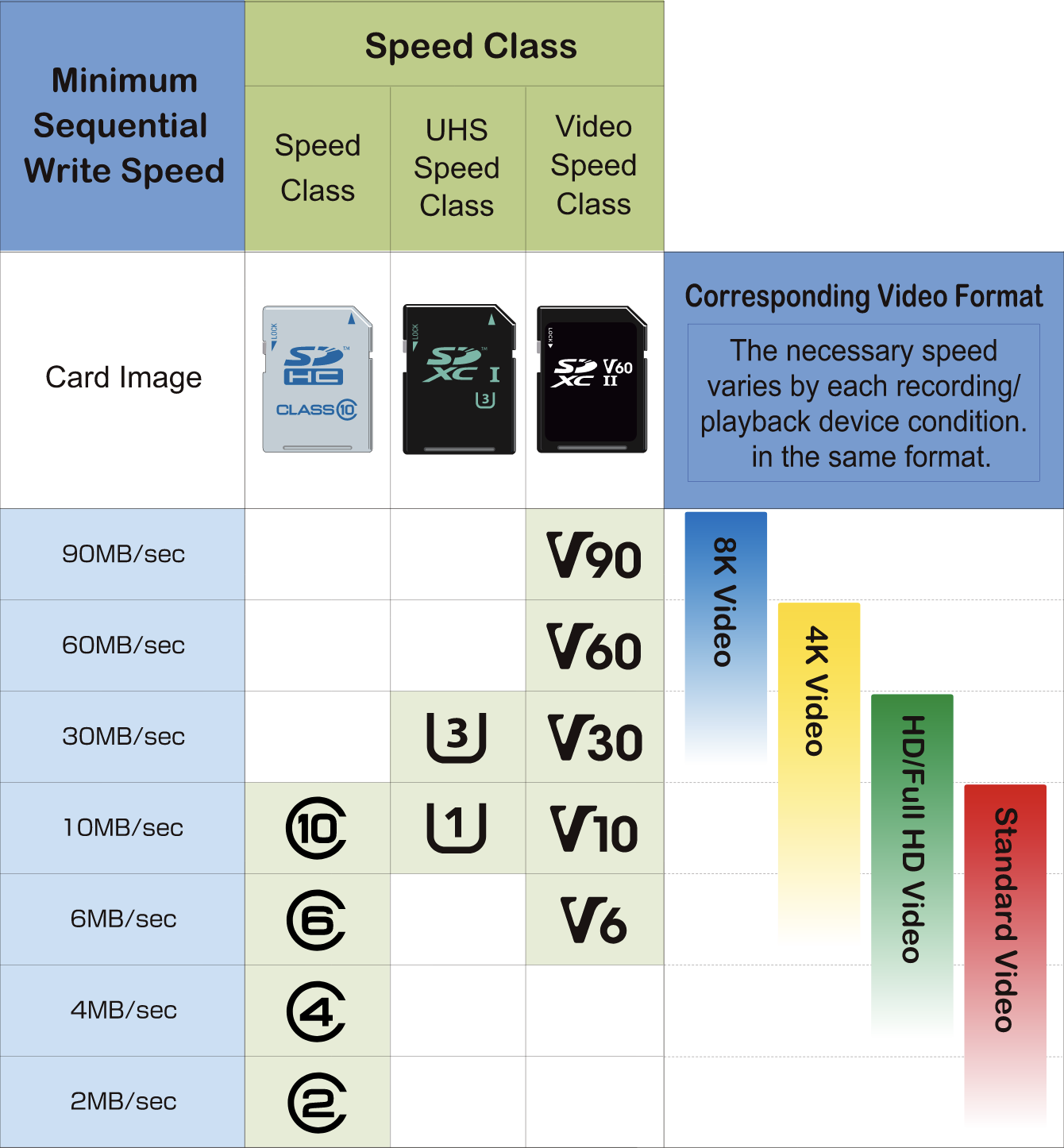
Put simply, since Video Speed Class was created to replace previous speed classes, you can pretty much just focus on that and ignore the rest. Besides, dedicated filmmakers and photographers should hardly ever look into SD cards that don’t hold either a V60 or V90 rating.
Refresh Pro Compatibility Marking
ProGrade Digital SD cards with the R logo on the label are compatible with our Refresh Pro software. Indicated by the letter R with an arrow inside. Refresh Pro allows you to check your card’s health and refresh it to factory-new condition. That helps to increase the lifespan of your card and ensures it keeps operating at peak performance.
Hopefully, you now have a better understanding of what all those markings and symbols on SD cards mean.
To make finding the right memory card even easier, we have created free compatibility charts. Go check them out to see what memory card matches your camera the best.
